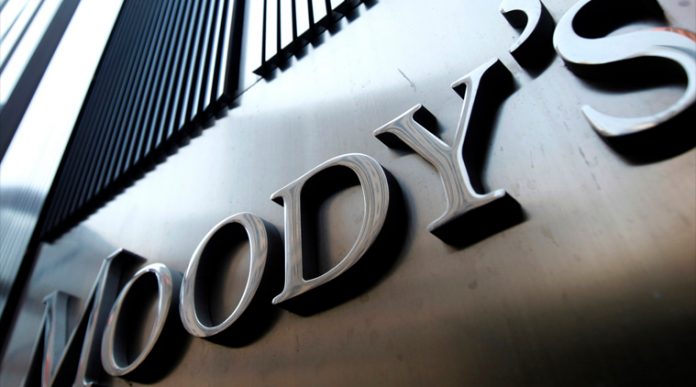KARACHI: International credit rating agency Moody’s Investors Service on Thursday maintained a stable outlook on five Pakistani banks for the next 12-18 months.
These banks include Habib Bank Ltd (HBL), Allied Bank Ltd (ABL), MCB Bank (MCB), National Bank of Pakistan (NBP) and United Bank Ltd (UBL), according to an announcement by the rating agency.
These five banks together account for 50pc of all system deposits, and together form the basis of the the agency’s analysis of Pakistan’s banking system.
In a press release, the agency had said that robust funding and liquidity and close links with the sovereign underpin its stable outlook for Pakistan’s banking system over the next 12-18 months.
Previously, the agency had changed the outlook of these banks from negative to stable in December 2019, and affirmed their B3 long-term local currency deposit ratings.
“The sovereign credit profile has improved in recent months, benefiting the banks through their high exposure to government securities, which account for around 40 per cent of their assets,” wrote Constantinos Kypreos, Senior Vice President of the Financial Institutions Group at Moody’s.
The press statement issued by the international rating agency said that in terms of operating environment, economic activity in Pakistan would also be supported by ongoing infrastructure projects and improvements in power generation and domestic security.
“Operating conditions for Pakistan banks, although gradually improving, remain difficult amid tight monetary conditions with the policy rate at 13.25 per cent and large government borrowing needs crowding out funding for the private sector,” Kypreos added.
When contacted by Profit via email for comment on interest rates, Kypreos explained, “Interest rates remain high, with the policy rate at 13.25pc, and having increased by 7.5 percentage points since January 2018. The SBP had accelerated its monetary tightening following a rise in inflation, while allowing the rupee to depreciate by around 35pc against the US dollar.”
Additionally, he said, “Going forward, we do see potential for lower rates, as the exchange rate has stabilised and appears to have found a near-term equilibrium, while long-term interest rates have fallen below short-term interest rates, indicating that markets expect SBP to lower policy rates over the next few years.”
In its accompanying detailed report, “Banking System Outlook – Pakistan”, the agency said that capital is modest and will remain stable.
“Sector-wide reported Tier 1 capital ratios stood at 14.2pc, but we adjust these by raising risk weights on government securities to 100pc from 0pc to reflect risks associated with the sovereign’s B3 credit rating.” the report said. Post-adjustment, the ratio is a more modest 7pc.
The agency expects banks to keep capital ratios steady by reining in dividend payouts, or through issuing Tier I or Tier II capital instruments.
The report did note worryingly that the non-performing loans might rise, due to the high interest rate and bank’s troubled foriegn operations.
“NPLs stood at a high 8.8pc of gross loans as of September 2019, although risks are mitigated by the fact that banks’ loan portfolios only make up 37pc of total assets. The government is working on laws to improve NPL recovery.” according to the report.
Kypreos further said in an email, “We do, however, note that the government is working to improve the legal and regulatory framework to support NPL recovery. Specifically, banks’ recent decision to establish a Corporate Restructuring Company should help them to restructure and resolve existing NPLs.”
As for banks’ profits, the agency said they would rise but still remain slightly below historical levels.
“Higher net interest margins (on the back of higher interest rates and government bond yields) and our estimated 10% credit growth will boost revenue, compensating for rising provisioning needs, ongoing pressures at banks’ overseas operations and higher costs.” said the report.
The press statement further stated that stable customers’ deposits and high liquidity also remain key strengths, providing banks with ample low-cost funding, therefore, capital levels will remain broadly stable.
In addition, the report said that customer deposits make up around 69pc of total assets. The agency expects this to grow by 12pc, providing banks with plentiful low-cost funding.
Cash and bank placements account for around 12pc of total assets, while another 40pc of assets is invested in government securities – with around 64pc in T-Bills, which can be repo-ed with the central bank – offering sound liquidity.
The statement did note that the exchange rate has stabilized since June 2019, and that markets expect the SBP to lower policy rates “over the next few years” – not months.
Moody’s also expects the government will remain willing to support at least the systemically important banks in case of need, but its ability to do so is limited by fiscal challenges reflected by its B3 rating.
























